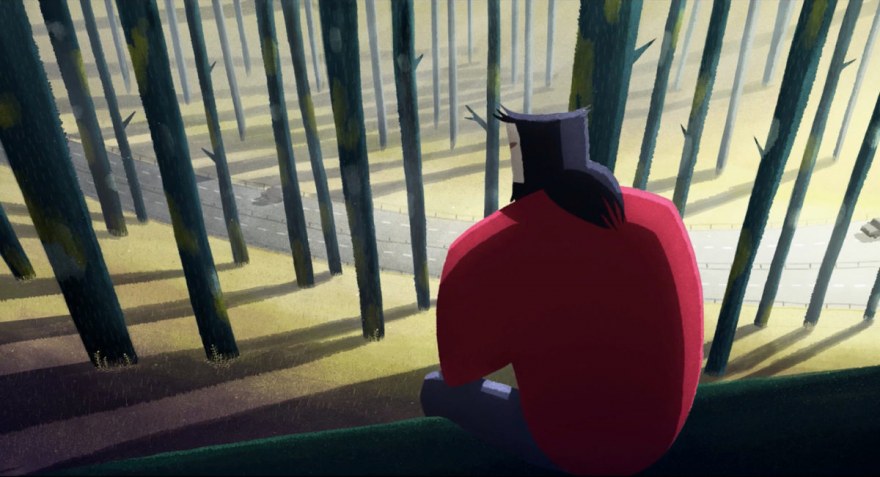Breakfast with Totems
Interview with Paul Jadoul, director of Totems
How did you get the idea to make Totems?
This film is the culmination of many desires that came together in one story. Firstly, there was nature with its majestic forests. Then the concept of metamorphosis which I wanted to animate in order to symbolize feelings. And then Man and his humility. The story was built little by little, but then a breakthrough came through an anecdote someone told me. A pigeon was caught between a window and the balcony railing of an empty apartment. I could see it desperately trying to get out of this tiny space, but never managing it. This situation showed me how life can be so fragile for an animal. This story adapted to a man’s concrete world gave me the desire to show how man himself can be just as vulnerable.
What interested you in the relationship between “animal totems”? Was it the biological characteristics of animals, or their mystical side?
Mostly the mystical and symbolic sides. In this case, because the trap is definitive, biological characteristics have little importance. Whether he is big or small, the result is the same, he is stuck. That said, notions of fear, being on alert, bitterness, willfulness, and courage are well captured by the metamorphoses, even if I don’t literally connect each animal to a particular feeling. I wanted it to play out more on a feeling level.
Could plant life also be totems?
One could see the trees as totems, and that sets the scene.
How did you work on the animation of Totems?
I worked from mood illustrations that I created. These images gave the tone right away. I put a strong emphasis on the depiction of nature, and I sorted through many memories of walks I had taken in the forest. Then I worked with the computer, mixing many technologies from 2D to 3D with a layer of special effects to bring it all to life.
How did you work with color? What was important to you about the red of the character’s clothing?
Initially my thought was to avoid the color green. I was afraid of clichés, so I forced myself to show nature in a more nuanced way. I think paradoxically it works well. But red was a visual choice, not a symbolic one. Red helped create the contrast needed with respect to the setting. At first, the character’s shirt was going to be checkered, but that felt like a cliché. The task of tracing these lines was a laborious aspect of the animation.
Are you sensitive to the relationship between humanity and animality and do you have other projects based on this subject?
Indeed, the wild instinct that lies dormant in every human being interests me. It’s more what we do with it that inspires me than the brute and uncontrolled impulses that can come out during moments of distress.
Any cinematic coups de cœur in the past year you’d like to tell us about?
I would have a hard time remembering all the films I saw in 2016, so I’ll just mention Jagten (The Hunt), which I saw recently, even if it’s from 2012. The story, breathtaking and revolting, grabs you from beginning to end. And it does so within a natural environment. It brilliantly measures the most base impulses of man. I really liked it.
If you’ve already been to Clermont-Ferrand, could you share with us an anecdote from the festival? If not, what are your expectations for this year?
Unfortunately, I have never been, and my greatest hope is that Totems can touch the viewers.
Totems is being shown in National Competition F1.









